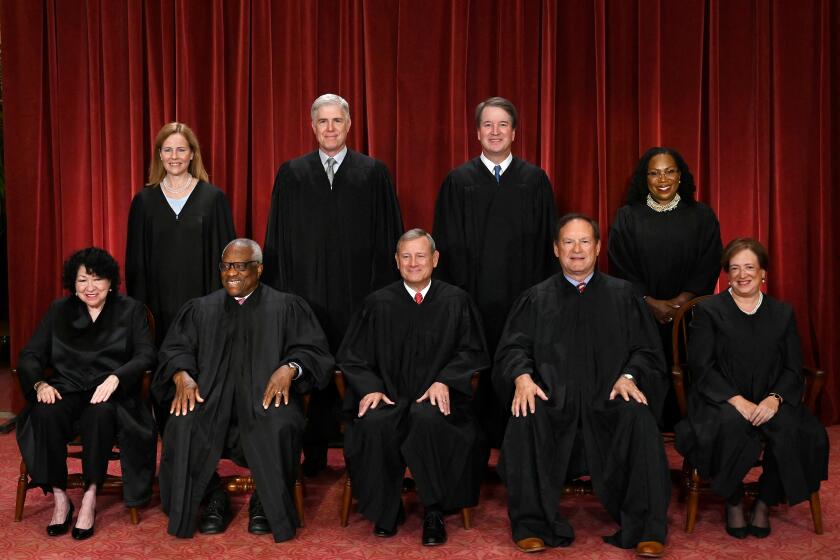Analyst Contradicts Governor on Level of ‘Rainy Day’ Fund
- Share via
SACRAMENTO — The Legislature’s budget analyst, contradicting Gov. George Deukmejian’s estimates that the state has a $1-billion reserve, released a report Friday saying that the so-called “rainy day” fund is down to $718 million and could dip as low as $138 million by the end of the budget year next June.
“Basically, we are not as flush financially as the governor is contending we are,” said Acting Legislative Analyst John L. Vickerman.
But the governor’s top budget adviser, Finance Director Jesse R. Huff, disputed the report. “The analyst’s numbers are wrong,” Huff contended, claiming that Vickerman and his staff were “mixing old data with new.”
Huff said the $1-billion reserve estimate by Deukmejian was not “sacrosanct,” noting it had gone up and down in the past depending on numerous variables, such as the number of students attending state-supported public schools or the performance of the economy. But he contended that it is too early in the budget year to make a reliable prediction on where state finances will be when the the fiscal year ends next June 30.
Vickerman acknowledged that the worst-case scenario of only a $138-million reserve was based on a series of potential budget developments that may not come to pass.
Unexpected Problem
But if the analyst is right that the state is in worse fiscal shape than Deukmejian reports--and the analyst was right during a similar dispute last year--it will mean that the governor and the Legislature will face an unexpected problem when they begin work on a new state budget in January.
Maintenance of a $1-billion reserve is the foundation of the governor’s budget policy. Deukmejian believes that a sizable reserve is necessary to avoid a replay of the fiscal crises of 1982 and 1983, when a rececession-related nose dive in state revenues contributed to a $1.5-billion budget deficit. Deukmejian has fought strenuously for the last four years for a $1-billion reserve.
If the legislative analyst’s projections are accurate, the governor and Legislature would have to come up with anywhere from $300 to nearly $900 million in new revenues or program cutbacks in order to create a true $1-billion reserve next year.
It is unlikely that Deukmejian could support a tax increase since he campaigned for reelection on a platform of not raising taxes. Perhaps more importantly, the state will be under a legal constraint to keep spending below a constitutional limit imposed by voters in 1979. State officials say the current $37-billion budget is $55 million below the spending limit, and the governor and Legislature will be hard pressed to avoid exceeding the limit next year.
The analyst contends that the drop-off in the reserve was caused by the state spending more than it was collecting in tax revenues, the very problem that led to the 1983 deficit.
“If we go into another recession, and some experts are predicting that might happen before the end of the fiscal year, then we will have a lot less in the bank to cushion the blow,” Vickerman said.
Shortfall Not Restored
The analyst’s report said the 1984-85 fiscal year’s $1-billion reserve was spent down to $293 million and never fully restored, creating the problem in this year’s budget.
The analyst said the state spent $1.1 million more than it took in during the 1984-85 fiscal year.
In addition, the governor and Legislature cut further into the reserve by enacting legislation since July that has increased the cost of state government by $170 million, the report said.
The report also projected a potential shortfall of $166 million in the Medi-Cal program. It went on to say that the state will have to pick up $39 million in costs stemming from a court-ordered desegregation of the San Jose Unified School District. And it said state tidelands oil revenues are likely to drop another $14.1 million due to the continued softness in the price of oil.
Federal cuts in programs for the needy could increase state welfare program costs by another $56 million, and the swelling of the prison inmate population is expected to add another $71 million to the Department of Corrections budget, the report said.
More to Read
Get the L.A. Times Politics newsletter
Deeply reported insights into legislation, politics and policy from Sacramento, Washington and beyond. In your inbox twice per week.
You may occasionally receive promotional content from the Los Angeles Times.








